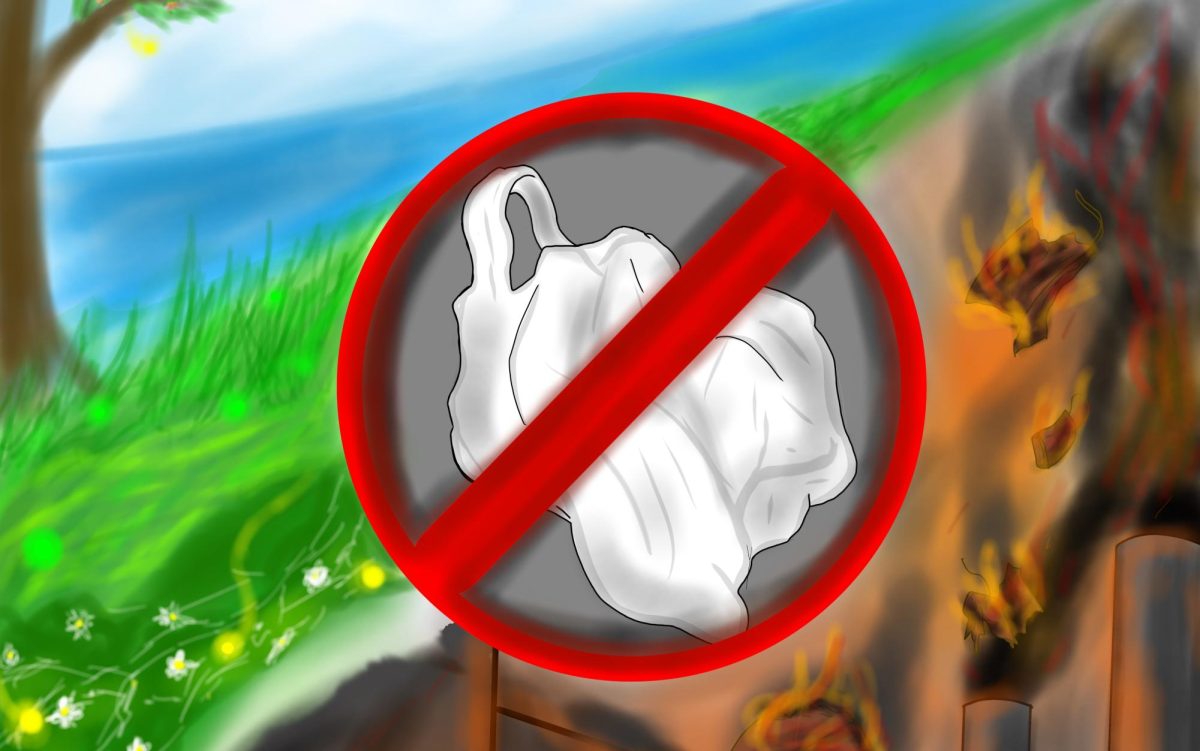Pro – by Joanne Liu
From the peak of the Himalayan Mountains to the depths of the Mariana trench, plastic bags have expanded their territory to nearly every corner of the Earth. They wreak an alarming level of havoc on ecosystems worldwide — and the consequences of tipping nature’s delicate balance is rapidly catching up to humans. It is due time for us to make dramatic changes to our greedy lifestyle before it is too late.
Effective on Jan. 1, 2026, a new law in California puts a complete ban on plastic shopping bags. The only options for shoppers will be paper bags (for the price of 10 cents), a reusable bag or no bag. California’s 2014 plastic bag ban horribly backfired due to a loophole in the law allowing grocery stores to sell even thicker plastic bags than before. But this new law seems to be air-tight: leaving plastic bags officially prohibited.
As said in the California Public Interest Research Group, Sen. Catherine Blakespeare said that plastic bags are used for an average of 12 minutes before being discarded. They are then dumped into landfills or out into nature, slowly deteriorating for 20 years, according to the World Wide Fund – Australia. In that time, it suffocates countless organisms and entire ecosystems. Once they break down into microplastics, they leak into the environment, eventually harming human health.
The damages these plastic bags have caused to our planet is nearly irreversible and must be put to an immediate end. According to the Center for Biological Diversity, “The world uses 5 trillion plastic bags a year.” We simply cannot afford to pump any more plastic poison into our systems.
California’s active efforts to combat this issue, although past attempts resulted in failure, is a step in the right direction. Charging 10 cents for a paper bag will motivate buyers into carrying reusable bags. In fact, stores can sell their own reusable bags to help shoppers. Completely eliminating the option of plastic bags will greatly reduce non-decomposable waste.
However, paper bags, the provided alternative, require more energy to produce and transport. While this is a valid environmental concern, it is less problematic when considering consumer preferences. Because paper bags will cost additional amounts, they will be less desired at grocery stores. By still providing some convenience, paper bags will ease the transition into a sustainable society where reusable bags are the norm. Furthermore, paper bags only take four to six weeks to decompose, which significantly aids us in decreasing our plastic pollution. While paper bags may still produce emissions, the net environmental impact will decrease, all while making our shift away from plastics less abrupt.
California’s new law will bring positive change to our planet. We will not let ourselves be choked by the plastic bags we consume and dispose without a second thought. The change starts here.
Con – by April Kato
We all know plastic waste is a leading factor of environmental damage. California’s ban of single-use plastic bags in stores starting January 2026 is a huge step towards standardizing plastic bag distributions, redefining what a “reusable” bag is (after the initial ban in 2014 backfired as stores offered thicker plastic bags labeling them as “reusable”) and reducing plastic consumption. Still, whether allowing paper bags to remain on the market is truly sustainable remains a question.
The production of paper bags requires up to four times as much energy as plastic bags, according to National Geographic. Aside from energy, it also requires chemicals that are toxic to the environment. While paper bags are biodegradable post-usage, the production process leaves a greater carbon footprint than plastic, undermining the ultimate point of this legislation: to protect our environment. Because plastic bags are no longer an option, demands for paper bags will likely increase. If a substantial amount of environmental damage is left regardless, what is the point in banning just plastic? While the paper bags under this new legislation are required to be 50% recycled, the detrimental results from production are not negligible.
Furthermore, paper bags take more energy to transport as they are heavier than plastic, again, leading to greater carbon emissions. This is another questionable aspect of the ban: a considerable impact on the environment remains through the presence of paper bags.
According to National Geographic, studies have shown that a paper bag has to be used three to 43 times in order to reduce its environmental impact to that of plastic. But paper bags are less durable than plastic bags. Plastic bags are likely more reused than paper bags, as after carrying home products, many households reuse them as garbage bags. With the absence of such reusable bags, people may buy more plastic bags to fulfill its absence but throw away the paper bags after a single use, potentially reversing any reduction in plastic waste that was achieved in accordance with this new ban.
The chief concern of this legislation is whether it will actually lead people to use reusable bags in larger numbers than before. There is a need to ensure that people are actually turning to reusable bags as a response.
This is not to say that plastic bags must remain in circulation — they are non-biodegradable, producing tons of plastic waste that make their way into our oceans. Paper bags, despite their incompatibility with eco-friendliness throughout production and transportation, are more recyclable which helps mitigate harmful costs.
The real solution to this problem is to allow neither. If we truly intend to cater to the earth and its inhabitants, we should ban all single-use bags options and immediately push reusable bags to the front.












